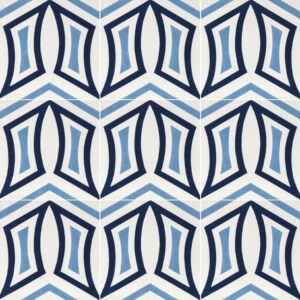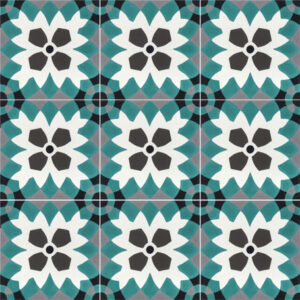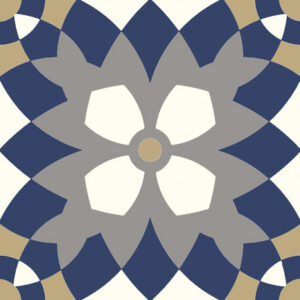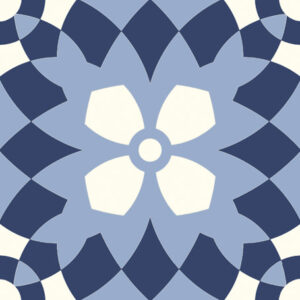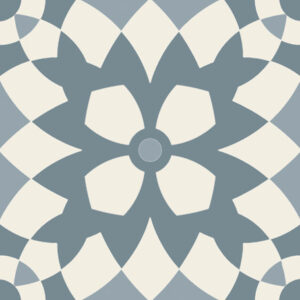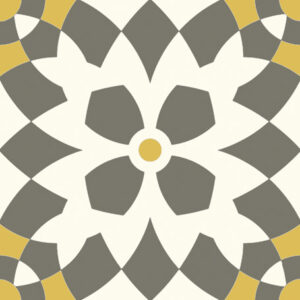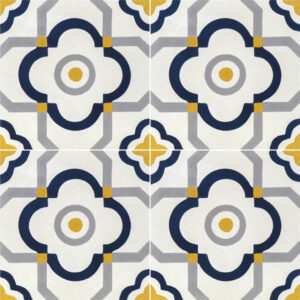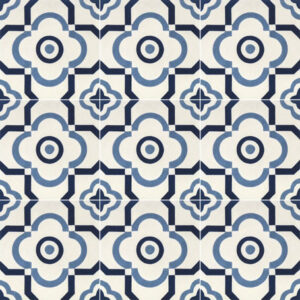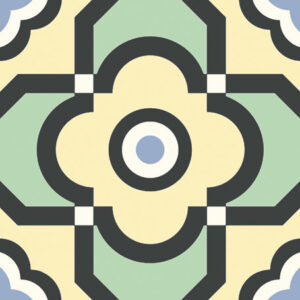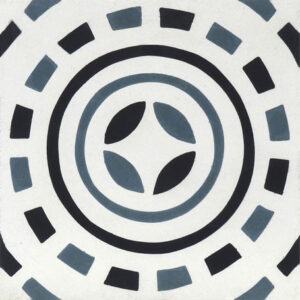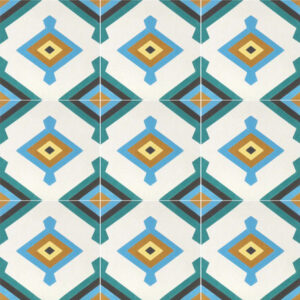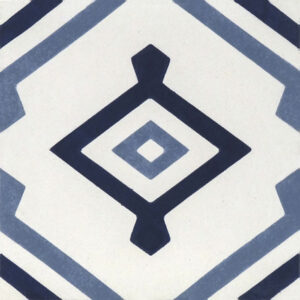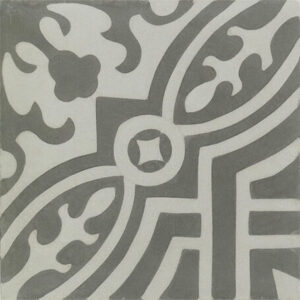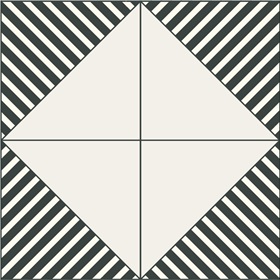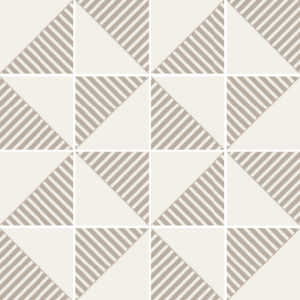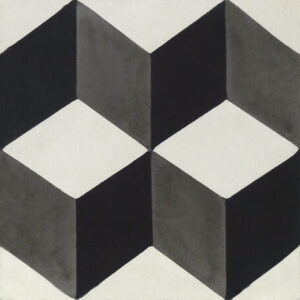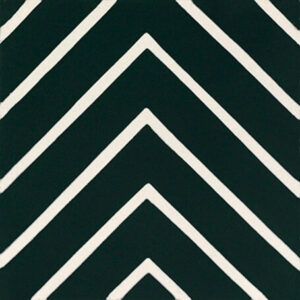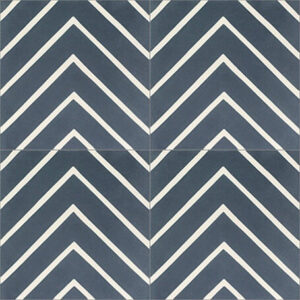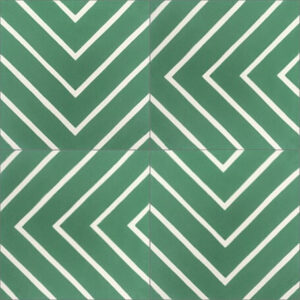240 results
Cement and concrete tiles have become increasingly popular in contemporary interior design due to their versatility, durability, and unique aesthetic. While often used interchangeably, there are subtle differences between the two. Encaustic cement tiles are handmade decorative tiles made from cement, marble dust, and pigment, while concrete tiles are made from a mixture of cement and aggregate. Both types, however, offer a range of design possibilities and can significantly enhance the style of a home.
Cement Tiles: Artistry and Versatility
Cement tiles, known for their vibrant colors and intricate patterns, are created using a centuries-old technique different from ceramic tiles. They are not fired; instead, they are pressed and cured to achieve their final form. This process allows for a wide range of cement tile designs, from geometric patterns to elaborate floral motifs. Cement tiles are celebrated for their matte finish and depth of solid color, making them a favored choice for adding character and flair to any space.
Concrete Tiles: Industrial and Minimalist
Concrete tiles, on the other hand, offer a more minimalist and industrial look. They are typically uniform in color and texture, providing a sleek, modern aesthetic. The sturdiness and understated appearance of concrete tiles make them ideal for contemporary designs that emphasize clean lines and raw materials.
Where to Use Cement and Concrete Tiles in Your Home
Cement tiles are a versatile and durable option for various spaces in and outside your home, offering both aesthetic appeal and functionality. Here’s how and where you can incorporate them into your living spaces.
Indoor Applications
- Kitchen Floors and Backsplashes: Cement tiles are a popular choice for kitchens due to their ability to withstand heat and moisture. They can add a vibrant, artistic touch to your kitchen remodel as a focal point in a cement tile backsplash or patterned tile floor. Patterns, colors and shapes of cement backsplash tile can be customized to complement your kitchen’s design, from modern to rustic styles and square to hexagon cement tiles.
- Bathroom Floors and Walls: The water-resistant properties of cement tiles make them ideal for bathrooms. Use them on the shower floor to create a non-slip surface, or on walls to add texture and color. The durability of cement tiles ensures they can handle the high humidity levels in bathrooms without losing their charm.
- Living Room Accent Walls: For an eye-catching feature, consider using cement tiles on a living room accent wall or fireplace surround. This can add a unique, artistic element to your space, transforming a plain wall into a work of art. Choose intricate patterns or bold colors in wall tile to match your decor style.
- Entryway Flooring: Make a great first impression with cement tile flooring in your entryway. Their resilience to foot traffic makes them perfect for high-traffic areas, and they can be easily cleaned. A well-chosen floor tile design can set the tone for the rest of your home’s interior. They’re also the perfect option as floor tiles in a mudroom.
Outdoor Applications
- Patio Flooring: Cement tiles are an excellent choice for patio flooring due to their durability and resistance to the elements. They can create a beautiful and inviting outdoor space that stands up to weather changes. Choose patterns and colors that blend with your outdoor environment for a cohesive look.
- Garden Pathways: Create charming garden pathways with hexagon cement tiles. Their sturdy nature makes them ideal for outdoor use, providing a durable and attractive path through your garden. They can add an artistic touch to your landscape design.
- Outdoor Kitchen Backsplash: If you have an outdoor kitchen, they’re a perfect choice as a concrete tile backsplash. They can withstand outdoor conditions and add a stylish element to your cooking area, making it a pleasant place to prepare meals and entertain guests.
- Swimming Pool Surrounds: Cement tiles are perfect for the area around a swimming pool. Their non-slip properties enhance safety, while their design options allow you to create a luxurious poolside atmosphere.
Commercial Spaces
- Restaurant Flooring: Cement tiles are an excellent choice for restaurant flooring. Their durability can withstand heavy foot traffic, and their wide range of designs can enhance the ambiance of the dining area. Additionally, they are easy to clean and maintain, making them practical for busy commercial environments.
In conclusion, cement tiles offer a versatile and stylish option for various indoor and outdoor applications. Their durability, aesthetic versatility, and resistance to elements compared to ceramic and porcelain tile make them a great choice for enhancing the beauty and functionality of your home.
Cement Tile Backsplashes
Cement tiles have emerged as a popular choice for kitchen and bathroom backsplashes, offering a perfect blend of functionality and aesthetic appeal. Their handcrafted nature results in subtle variations that give each backsplash a unique character, transforming these often-overlooked areas into stunning focal points. The wide array of bold patterns and vibrant colors available in encaustic cement tiles allows homeowners to express their personal style and add depth to their spaces. Beyond their visual appeal, cement tiles are prized for their durability and resistance to moisture, making them an ideal choice for the demanding environments of kitchens and bathrooms.
When used in backsplashes, cement tiles can dramatically alter the atmosphere of a kitchen or bathroom. In kitchens, a cement tile kitchen backsplash can complement various countertop materials and cabinet styles, whether you’re aiming for a rustic farmhouse look or a sleek modern design. In bathrooms, cement tile backsplashes can create a spa-like ambiance or add a pop of color to neutral spaces. Their versatility allows for creative installations – from covering the entire wall behind a vanity to creating a defined border around a mirror. Regardless of the specific application, cement tile backsplashes offer a way to infuse personality and craftsmanship into these essential rooms, elevating their overall design and functionality.
Design Considerations
- Durability and Maintenance: Both cement and concrete tiles offer exceptional durability, but they require sealing during the installation process to protect against stains and moisture. Regular maintenance is necessary to preserve their appearance over time.
- Color and Pattern Coordination: When working with patterned cement tiles, it’s important to balance their boldness with more subdued elements in the room. For concrete tiles, incorporating textures and colors that complement their industrial vibe is key.
- Mixing and Matching: Cement and concrete tiles can be combined with other materials like wood, metal, or glass to create a layered and textured interior. This mix of materials can add depth and interest to the design.
Cement and concrete tiles offer distinct yet versatile options for home design. Whether it’s the vibrant and intricate patterns of cement tiles or the sleek, minimalist look of concrete tiles, both bring a unique character to interiors. They can adapt to various design styles, from the eclectic and bohemian to the modern and industrial, providing homeowners with a durable and stylish flooring and wall option. Browse the wide selection of high-quality tiles in our online cement tile shop!
